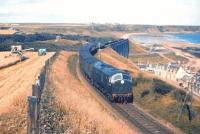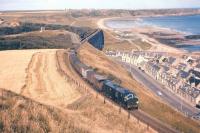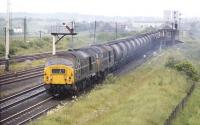The difference would be, I believe, that two locos in multiple would have the Blue Star control arrangements, while the loco at the other end of the Push-Pull was controlled over the RCH carriage jumpers. Someone will (hopefully) be along soon to describe the difference between what was possible on each.I'm still not clear exactly the difference between this arrangement and that on locos in multiple working next to each other though.
I also don't understand why such a pointed difference was made about the Push-Pull Class 27s, numbering them in a separate series, when on the odd occasion when there was a Class 25 or 37 substitution for one, it seemed a normal unmodified loco was fine.
I've linked to an account I did of the Push-Pull operation in the 1970s before, but here it is :
(1) ScotRail Express in the 1980s | RailUK Forums (railforums.co.uk)




